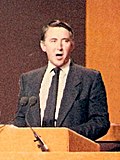1979 UK general election
|
|
|||||||||||||||||||||||||||||||||||||||||||||
|---|---|---|---|---|---|---|---|---|---|---|---|---|---|---|---|---|---|---|---|---|---|---|---|---|---|---|---|---|---|---|---|---|---|---|---|---|---|---|---|---|---|---|---|---|---|
|
|||||||||||||||||||||||||||||||||||||||||||||
|
|
|||||||||||||||||||||||||||||||||||||||||||||
|
All 635 seats in the House of Commons 318 seats needed for a majority |
|||||||||||||||||||||||||||||||||||||||||||||
| Turnout | 76.0% ( |
||||||||||||||||||||||||||||||||||||||||||||
|
|||||||||||||||||||||||||||||||||||||||||||||

Colours denote the winning party, as shown in the main table of results.
|
|||||||||||||||||||||||||||||||||||||||||||||
|
|||||||||||||||||||||||||||||||||||||||||||||
The United Kingdom general election of 1979 was held on 3 May 1979 to elect 635 members to the British House of Commons. The Conservative Party, led by Margaret Thatcher, ousted the incumbent Labour government of James Callaghan with a parliamentary majority of 43 seats. The election was the first of four consecutive election victories for the Conservative Party, and Thatcher became the United Kingdom's and Europe's first elected female head of government.
The previous parliamentary term had begun in October 1974, when Harold Wilson led Labour to a majority of three seats, but within 18 months he had resigned as prime minister to be succeeded by James Callaghan, and within a year the government's narrow parliamentary majority had gone. Callaghan had made agreements with the Liberals, the Ulster Unionists, as well as the Scottish and Welsh nationalists in order to remain in power. However, on 28 March 1979 following the defeat of the Scottish devolution referendum, Thatcher tabled a motion of no confidence in James Callaghan's Labour government, which was passed by just one vote (311 to 310), triggering a general election five months before the end of the government's term.
...
Wikipedia



